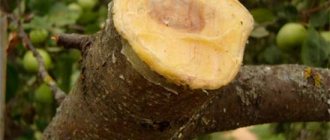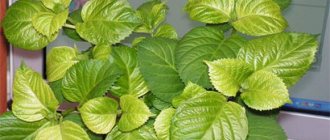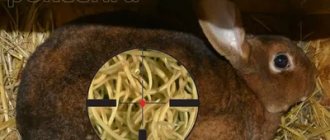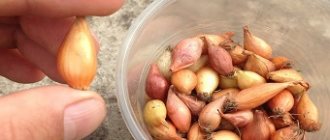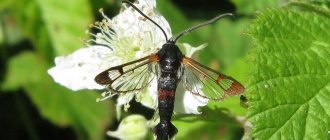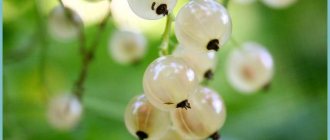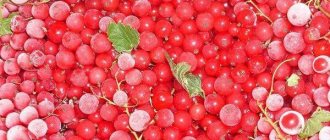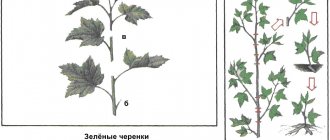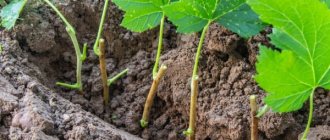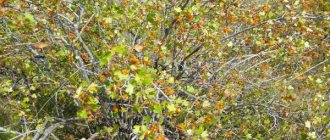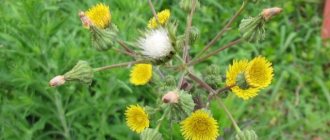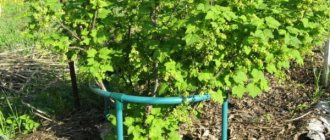What is blackcurrant terry?
Blackcurrant terry (reversion, curl) is a viral disease that affects all parts of the bush: shoots, leaves, fruits.
If terry disease is not detected at an early stage and treatment is not started, the plant will stop bearing fruit and die.
Description of the disease
Terry is caused by a virus. It develops only in the cells of living organisms and enters the site through planting material or insects.
During the growing season, the causative agents of terry disease spread throughout the plant, primarily attacking the leaves and branches, and later move on to the fruits and root system. Sometimes viruses appear after pruning and penetrate open wounds.
Often the terry disease is disguised - there are no external signs of the disease. The virus can only be recognized by a sharp decrease in yield.
Damage caused
The damage from terry disease is significant: if plantings of fruit bushes are not treated, the plants will die. If a viral disease is detected at an early stage, the crop can be saved.
The disease is dangerous because it spreads quickly and affects neighboring plants. The disease is especially common in the Central and Northwestern regions.
Conclusions and recommendations
Terry disease is a dangerous viral disease of currants, which is not detected in the first years of infection. Externally, the bush can look healthy for up to 4 years.
Therefore you should:
- carry out timely and correct pruning of bushes. With severe pruning, a lot of growth appears, which especially attracts insect pests;
- purchase new planting material ONLY from garden centers and nurseries;
- plant new varieties that are immune-resistant and disease-resistant;
- Conduct regular preventive examinations for damage by kidney mites or other pests.
*** with changes and additions dated September 14, 2019.
Causes of terry
Currant bud mite
The most common carrier of the disease is the kidney mite. It appears on the site due to infected seedlings. At the moment of flowering of the currant, the affected buds wither, and the female mites get out.
Infection occurs at the end of spring or beginning of summer, depending on the timing of ripening. In addition to the bud mite, aphids, plant bugs and spider mites can carry the virus. They actively develop in hot and humid summer conditions and love weakened plants.
The virus also occurs because the currant seedlings were already infected at the time of planting. The peculiarity is that the planting material is externally healthy - there are no signs of damage. And only after 2-3 years, summer residents observe a decrease in yield and delayed flowering.
Attention! The virus prefers plants with weak immunity. It occurs due to improper care: due to lack of watering and fertilizing, irregular pruning, and weeds on the site. Therefore, it is important to care for the currant bush, monitor its appearance and conduct inspections.
Causes of the appearance and spread of the disease
The causative agent of currant blight is mycoplasma Ribes virus. The main spreader of the disease is considered to be the kidney mite. This microscopic insect, 2 mm in size, is carried to the bush by the wind or birds. The insect may be present on purchased seedlings or garden tools.
Over the summer, the prolific parasite produces up to 3 thousand individuals. By feeding on the sap of the bush, the tick transmits the virus, which spreads through the vessels to all parts of the bush. The parasite can overwinter in the buds, becoming active in the spring. The virus also does not freeze out; it quietly overwinters in the vessels of currant tissue.
Symptoms
On young plants, doubleness most often develops hidden. Symptoms appear on shrubs older than 3-4 years. Signs of damage become clear when the incubation period ends.
External signs of damage to black currant by terry
A characteristic symptom of terry growth is the absence of berries on the bushes. Gardeners also notice that the leaf plates are deformed, and the shape and color of the flowers change. Many lateral shoots and green shoots appear, and the strong currant aroma of the plant disappears.
On some shrubs, gardeners notice that the leaves become asymmetrical, with rare coarse veins appearing on one side. Such signs can be detected visually during examination and prevent the development of the disease.
When terry blossoms are detected in the spring, gardeners notice deformed flowers - they seem to be covered with scales and take on a reddish-lilac hue. The petals of the flower are separated, the stamens are elongated. Complete destruction of the bush is accompanied by the fact that the plant becomes dense - a large number of shoots grow.
External signs
Signs of infection with this viral disease can be determined by characteristic external signs, such as:
1. Changing the shape of the leaf. Instead of the usual five-lobed leaves, the leaves become three-lobed. The shape is more elongated. The denticles along the edge of the leaf become larger and sparser.
Currant terry - healthy and damaged leaf
2. A large number of thin, densely arranged branches with small leaves are formed on the affected bushes. The bush becomes very thick.
3. The smell specific to blackcurrant leaves disappears
4. Change in inflorescences. A healthy currant bush has yellow flowers, in their place a green berry is formed. A diseased bush has pinkish or purple flowers, and an ovary does not form after them. The entire flower cluster turns into a thin green twig with several scales instead of flowers and berries.
Characteristic signs of double blight infection based on the appearance of the inflorescences
5. The network of veins becomes coarser, small veins are practically invisible.
6. At the initial stages, late flowering is observed, and very small berries are formed.
Currant terry - healthy and damaged bud
How to treat shrubs
There are several ways to treat shrubs. Chemicals are used when the virus has already been detected on the plantings. Agrotechnical techniques and traditional methods act as additional methods of protection; to be effective, they are combined with chemicals.
Chemicals
Chemicals are highly aggressive, so they are used with precautions. An effective chemical for treating terry hair is Fufanon. The active components of the drug are malathion. It blocks pathogens within 1-2 hours. Working fluid consumption is 1.5 liters per 1 bush. Spray the solution in dry, windless weather, wetting the currant leaves on all sides. Leftovers cannot be stored; they are disposed of immediately.
Gardeners use the drug “Topaz”. It has a preventive, curative and eradicative effect. The Topaz solution is quickly absorbed by currants, which reduces the risk of being washed off by rain or evaporation due to sunlight. To make a solution, 2 ml are diluted in 10 liters of water, the consumption rate is 1 liter per 10 square meters. m. It is not recommended to mix Topaz with other pesticides. During the season, currants are processed 4 times with an interval of 2 weeks.
Attention! To work with chemicals, summer residents prepare protective clothing, a respirator, gloves and goggles. During treatment, it is forbidden to drink or eat, and there should be no children or animals nearby. Do not mix the working solution in containers for food and water; it is better to use a household basin or other container for these purposes.
Agrotechnical techniques
Agrotechnical techniques are not able to completely cure black currants from terry disease, but they help strengthen the bush’s immunity and slow down the spread of the disease.
Summer residents pay attention to the following recommendations:
- If a source of infection is detected, the affected bushes are removed and burned away from the site. The remaining plants are treated with Fufanon, a solution of Bordeaux mixture or copper sulfate. And the soil under the bush is watered with a solution of wood ash.
- In early spring and the first half of summer, shrubs are sprayed with a solution of colloidal sulfur. The treatment destroys pathogens, protects currants from aphids and bud mites, and prevents the appearance of fungi. During the season, the event is held 2 times with an interval of 1 month.
- To strengthen the immunity of currants, mineral and organic fertilizers are applied. In April, the bush is watered with mullein solution, in mid-June it is fertilized with double superphosphate, and in August it is watered with a herbal infusion of chamomile, tansy and sage. Comprehensive care not only protects against viruses, but also increases productivity.
Traditional methods
Folk remedies are used only in conjunction with professional treatment methods.
To prevent and treat terry, use an infusion of tomato tops . It contains solanine, a poisonous compound that fights diseases and pests. To prepare, take 4 kg of fresh tomato leaves, chop them and pour 10 liters of warm water. Leave for 4 hours and put on the stove for half an hour to boil. Afterwards, the broth is filtered, diluted with water in a ratio of 1:4 and 40 g of grated soap is added so that the solution sticks to the bushes. Damaged plants are sprayed early in the morning.
To prepare a green medicinal infusion, chamomile, dandelion, sage, calendula and other medicinal herbs are used in equal parts. They are soaked in boiling water for a day, filtered and diluted in a ratio of 100 ml of herbs per 1 liter of water. Currants are sprayed 2 times a month; pesticides are used in between such treatments.
Methods to combat the defect
Terry disease is a very dangerous disease of berry plantations. You won't be able to get rid of it completely. Even if the plant is destroyed at the roots, the virus is still present in it. Therefore, it is impossible to graft young shoots onto a stump where a diseased bush grew.
Important! The virus can only be destroyed together with the bush.
Then how to deal with terry? The main thing is to protect your lands from the attack of the “enemy”, or to prevent an existing pathogen from spreading. First of all, this concerns the kidney mite:
- Treatment of viral terry black currant occurs by pruning shoots affected by the bud mite and removing diseased buds. In spring, mite settlements on the kidneys become especially noticeable. Before they have time to open, they become swollen and not dense. These buds should be cut off and destroyed. If there are a lot of buds, then the entire shoot is removed. The procedure must be completed before the buds open.
- Hot water is very effective in the fight against ticks. Infected shoots are cut back to healthy wood. The remaining branches are tied together and scalded with water, the temperature of which should be up to 80 degrees. Cuttings from diseased branches are always destroyed; in the spring you can burn them with last year’s foliage.
- To combat currant terry and spider mites, you can use special preparations that have insecticidal properties. These include: colloidal sulfur, Lepidocid solution, Bitoxibacillin, Fufanon, Akarin and others, which are sold in specialized stores. It is important to dose the product according to the instructions.
See also
Description of the red currant variety Jonker van Tets, cultivation and careRead
Red currant terry disease is similar. Accordingly, the treatment is the same. All the procedures described above can be used to preserve red and white currant plantings.
Preventive measures
The causative agents of the disease are viruses; the fight against them is long and not always fruitful.
To prevent the development of the disease, summer residents take simple measures as preventive measures:
- buy two-year-old seedlings from trusted sellers;
- before planting, treat the soil with Bordeaux mixture and dig it thoroughly;
- plant currants next to gooseberries, avoid proximity to raspberries;
- at the end of February or beginning of March, water the bushes with boiling water - it destroys viruses and pest larvae overwintering in the soil;
- water the currants once every 2 weeks with water at room temperature;
- regularly inspect the plants and monitor the amount of harvest;
- remove and burn all weeds and debris from the plantings.
Currant feeding
In the fight against the virus, special fertilizers that increase plant immunity also bring good results. Basically, it is worth choosing phosphorus-potassium fertilizers. They are the ones that give the greatest effect. It is important to remember that to propagate currants, you need to use only those bushes that have not been sick for at least four years. Also, as a top dressing, experienced gardeners use spraying with solutions of manganese, molybdenum and boron. On the contrary, nitrogen-containing fertilizers attract pests. They need to be added in moderation. In the fall, when all the harvest in the garden has been harvested, you can spray with a solution of colloidal sulfur.
Terry-resistant blackcurrant varieties
Choosing a resistant variety is one of the preventative measures that helps prevent the appearance of terry. Summer residents from central Russia are advised to pay attention to the varieties Ilya Muromets and Titania. In addition to strong immunity, they are distinguished by their ease of care, large and juicy berries, and balanced taste.
For the northern regions, the Sakharnaya or Sokrovische varieties are chosen . They can withstand temperatures down to -40°C and rarely suffer from rot, powdery mildew, or rot. The varieties are resistant to drought and can easily tolerate long-term lack of watering.
In the south, Gamma or Sevchanka currants are grown . Plants are not afraid of bud mites and are rarely damaged by other pests. The berries are sweet and sour, the taste is refreshing.
Attention! Even when planting terry-resistant varieties, we must not forget about preventive and agrotechnical measures. There is no plant that is 100% immune to leaf blight. It is also recommended to study reviews from experienced gardeners when choosing a variety.
Anthracnose
Among summer residents and gardeners, the name fly-catcher is more common. The disease is relevant for all types of currants. But the pathogen has the greatest selectivity for red currants.
How to recognize the disease?
The pathogen is highly resistant and thrives in last year’s currant leaves, overwintering under bushes. Its spread is facilitated by water and numerous bugs and insects. A fungal infection affects bushes during the rainy season. High humidity stimulates the rapid growth of pathogenic fungus. It spreads throughout the bush, leading to its death. Main signs of the disease:
- the appearance of small brown spots. Their diameter is up to 1 mm. There are dark tubercles in the center;
- the spots grow and merge, involving the entire leaf blade in the inflammatory process;
- as a result, the leaves dry out and fall off;
- the bush is dying.
Red currants tolerate the disease much worse than black currants. A few small spots are enough and the leaves will begin to fall off.
Fungal spores can persist in contaminated plant material for many years, perfectly tolerating any frost.
Prevention
- Dead bushes are dug up and burned.
- Old and diseased leaves must be completely destroyed.
- Mandatory digging of the earth along the periphery of the bushes is carried out. The depth of the top layer is 10 cm.
- In the infected area, it is necessary to carry out a special autumn treatment with a fungicide. You can generously spill the soil around the bushes with a solution of copper sulfate.
- New bushes should not be planted on contaminated soil. You need to choose a new place at least 5 m from the fungal outbreak.
- All weeds must be carefully weeded. It is better not to leave them on the site. The infection persists in them.
Treatment
Timely treatment is the key to saving the bushes in time. What you can use for this:
- Bordeaux mixture is the highlight of all gardeners for many pathologies. It kills fungi and stops the disease. Therefore, when spots with tubercles are detected, immediate treatment should be started. The drug is diluted as follows - 100 g of product per 10 liters of water;
- Nitrafen. A 3% solution is an effective remedy against fungi. Therapeutic dose is 300g per 10 liters of liquid. Plants are sprayed in the spring before the buds swell. At the end of October - after the leaves have completely fallen off;
- Cuprosan;
- Colloidal sulfur.
Choosing a resistant variety ensures success when growing currant bushes.
Advice from experienced gardeners
To protect the bush from terry, gardeners make sure that the soil is nutritious and balanced. When planting, the pit is fertilized with organic matter, a distance between seedlings of 1-1.5 m is maintained. Every year in early spring, pruning is carried out - dry and weakened branches are removed, thereby reducing the likelihood of pests and diseases. Every year, shrubs are treated with a solution of Bordeaux mixture - a simple and powerful remedy that protects against viruses and fungi.
It is recommended to remove currants from the area if currants have affected more than 40% of the bush. In this case, it is useless to save the plant - it is better to remove it immediately so as not to infect nearby bushes and save the remaining harvest.
How to deal with kidney mites
In the spring, you need to carefully examine the bush and remove all swollen buds in which the pest overwinters. If the shoot is severely affected, it must be removed entirely. All cut branches are burned.
Several chemical treatments are carried out against ticks.
• The first treatment begins in the spring, at the time of tick migration.
• The second is held in the first half of summer.
The migration of mites to young buds occurs before flowering, and then it is necessary to treat with drugs. It is good to use biological preparations for these purposes:
• Lepidocyte;
• Bitoxidacillin.
In case of severe infection, when no control methods help, you can resort to chemicals.
• Fufanon;
• Akarin;
• Fitoverm.
If necessary, re-treatment is carried out after the harvest is complete, when the pest is actively reproducing.
